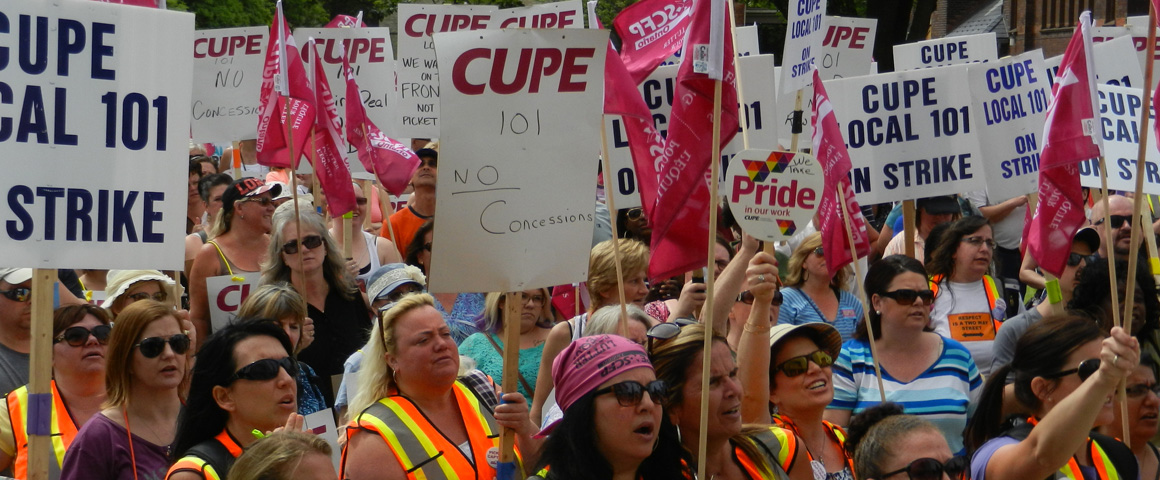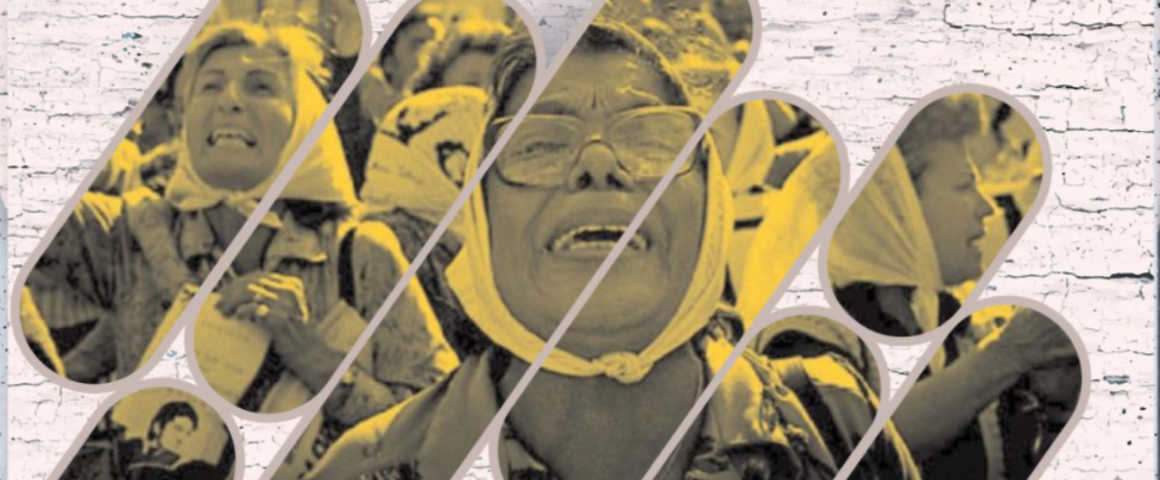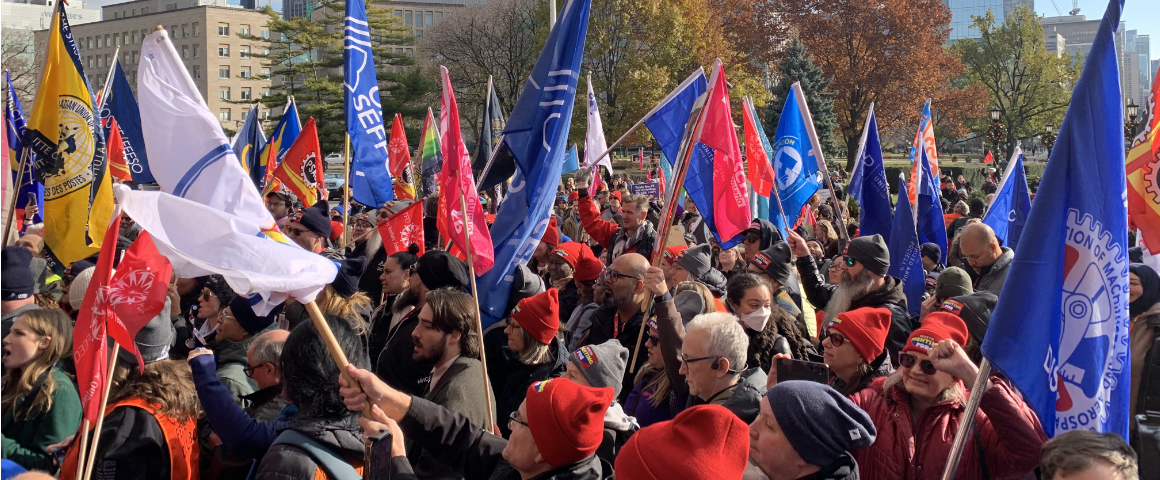By Helen Kennedy, Former President, CUPE Toronto; former co-chair, CUPE National Women’s Committee; former member CUPE National Women’s Task Force.
The chant of “Where are the women” echoed through the halls of the Winnipeg Convention Centre 14 years ago this month. The Canadian Union of Public Employees (CUPE) had just elected their new Executive Board after 12 years of being led by Sister Judy D’Arcy. As the new Board members strode up the aisles towards the podium, delegates were astounded to see so few women marching toward the swearing in. Including the two highest officers who were male, only three women out of a total of 22 were about to join the Board. The Executive Board of CUPE National had just gone from gender equity – 50% women – to 13% women. Delegates were crushed.
That was only the beginning of the disillusionment of women in CUPE. Shortly after taking office, new President Paul Moist knew that CUPE women were angry, especially since women make up almost 70% of the union’s membership. For the 2005 Convention, under pressure from the National Women’s Committee, Moist presented a resolution to the National Executive Board to implement a National Women’s Task Force – to make recommendations on programs that will advance women’s equality in the union, including structural change; and report back to the members through the National Executive Board, provincial division conventions and the 2007 National Convention.
The National Women’s Task Force had a comprehensive process to discuss the situation of women in CUPE and specifically the position of women in leadership. Task Force members held extensive consultations with members across the country.
The Task Force identified barriers that hindered women’s involvement in their union. Despite the growing awareness of equality in family relationships, CUPE women still carried the primary responsibilities for family and home. Many CUPE women worked in precarious jobs, on contract or in the lower paid CUPE positions in childcare and social services. Harassment was cited as a systemic problem; overall union culture and practices of the union were not seen as welcoming. Ironically, during one NWTF meeting, we were informed that a CUPE local was sponsoring a wet t-shirt contest.
After their extensive consultation, the National Women’s Task Force presented 54 Recommendations to the 2017 National Convention, which will begin on Oct. 2 in Toronto..
The first recommendations put forward by the Task Force, in 2007, were the Bargaining Conference for Women, adopting a Code of Conduct at CUPE National meetings and structural recommendations for assuring some representation by women on the National Executive Board. Only the recommendation for the National Women’s Bargaining Conference, and the Code of Conduct were passed at the 2007 Convention.
The Task Force was disbanded, and notwithstanding those of us who remained on the National Women’s Committee, there was no longer any accountability to the women (and men) of CUPE.
So where are we now, ten years after the Task Force reported to the National Convention?
The picture on the tenth anniversary of the Task Force is far less rosy than CUPE has portrayed on their pamphlet going into this convention. Ten years later, we still have two white men in the two National Officer positions. There are only 8 out of 23 women on the NEB – we’ve grown from 13% to 28% women, a measly 15%. Instead of celebrating, CUPE leaders should be taking concrete action. There are remarkable women who have served on the executive board for many years, but they don’t seem to be part of the succession plan for national leadership.
CUPE has been hobbled with a complicated and out-dated structure, which focuses mainly on geographic representation. Lost in the structure is sectoral, gender and equity representation.
The structural resolutions proposed by the NWTF included the following: “Create two new full-time Executive Vice-President positions for a total of four full-time National Officers. Of the four National Officers, gender parity shall be applied: two officers must be women and two officers must be men. The gender requirement shall expire at the 2017 Convention.”
It seems quite depressing that the task force felt that a weaker gender equity requirement and a sunset clause would help to get support from the convention.
This convention will be debating several major resolutions that deal with structure. Resolution 36, submitted by the National Executive Board, would create yet another Task Force, this one on Governance and structure of the National Union and report to the 2019 Convention. Delegates, however, can take action at this convention by supporting two other resolutions:
- C8, which adds four additional Diversity Vice-Presidents for women, workers with a disability, LGBTII workers and Young Workers.
- Resolution R25, which proposes an additional Executive Officer position.
These two resolutions are good steps forward, but the proviso in the first that only two can be from one province is a barrier. R25, on the other hand, adds a third national officer who could be a woman. While there is no gender equity proviso, delegates should pass this resolution at this convention and work diligently to ensure that at least one of the three officers elected at the 2019 Convention is a woman who understands the need to restore CUPE as a social union and a leader in women’s movement. Better yet, delegates should ensure that when the new National Executive Board marches down the aisle to be sworn in at this year’s convention, there is no need to chant, “where are the women?”




